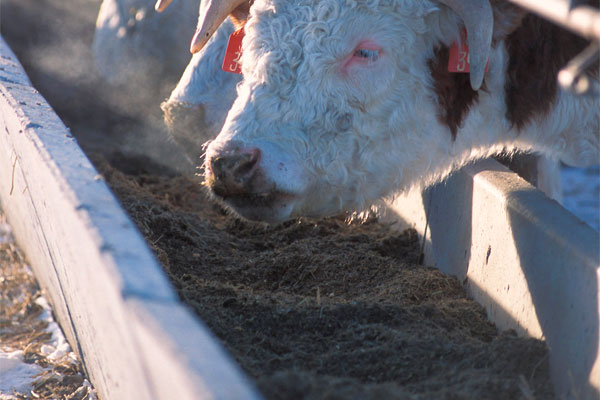Enhance in vitro ruminal fermentation of corn silage with enzymes

What are the effects of ruminal fermentation of corn silage? Four researchers from Thailand, Aegentina and Canada conducted two experiments and reported the findings in the July edition of Livestock Science.
Two experiments were conducted to evaluate the effect of four enzyme additives on ruminal fermentation of corn silage using a 48°h batch culture in vitro assay with buffer and ruminal fluid. Experiment 1 (Exp. 1) and Experiment 2 (Exp. 2) were conducted as completely randomised designs each with two runs and four replicates. The enzyme additives (E1, E2, E3, and E4) were commercial products that provided a range in endoglucanase, exoglucanase, and xylanase activities. For both xylanase (birch wood and oat spelt substrate) and endoglucanase (carboxymethylcellulose substrate), the enzyme products (per ml) were ranked E4>E1>E2>E3. In Exp. 1, the four enzymes were added at 0, 2, 4, and 8 μl/g of corn silage dry matter (DM), whereas in Exp. 2 enzymes were added at 0, 0.5, 1, 2, and 4 μl/g DM. Gas production (GP) was measured at 3, 6, 12, 18, 24, and 48 h after incubation. Disappearance of DM (DMD), neutral detergent fiber (NDFD), and acid detergent fiber (ADFD), and volatile fatty acid concentrations (VFA; total and individual molar proportions) were determined after 24 and 48 h. In Exp. 1, E1 and E2 had higher NDFD and ADFD at 24 and 48°h of incubation (P<0.001) compared with E3 and E4.
Results
Increasing dose rate increased NDFD and ADFD for all enzymes (except ADFD for E4 at 48 h), with the optimum dose rate dependant on the enzyme additive (dose×enzyme; P<0.01). There were some treatment effects on DMD and total GP at 24 and 48°h, but these responses were not consistent with responses in NDFD and ADFD. Experiment 2 was conducted to confirm the effects and optimum dose rate of each enzyme additive. In Exp. 2, DMD was not affected by enzyme after 24 and 48 h incubation. There were no enzyme×dose interactions for DMD, NDFD, or ADFD after 24 or 48 h of incubation (except for ADFD at 48 h). After 24 h, DMD, NDFD, and ADFD increased linearly with increasing dose (P<0.05); after 48 h DMD increased linearly, whereas NDFD increased quadratically with increasing enzyme dose (P<0.05). The ADFD increased linearly after 48 h for E3 and E4, but after 48 h ADFD increased quadratically for E1 and E2. Total GP was consistently lowest for E4 at both incubation times (P<0.05). There were no enzyme×dose interactions (P>0.05) for any of the fermentation variables at either 24 or 48 h of incubation in Exp. 2. There were differences amongst the additives for total VFA at 24 and 48°h (P≤0.05); increasing enzyme dose decreased total VFA after 24°h but increased total VFA at 48°h, such that all doses were higher than the control (P<0.001). Overall, the enzyme additives increased NDFD and ADFD of corn silage in vitro; however, E1 and E2 were more effective than E3 or E4. Responses to increasing dose of enzyme were generally linear or curvilinear, and the optimum dose rate differed amongst the products evaluated. Evaluation of the enzymes at 24 and 48°h generally led to the same ranking of the additives, and the degradation of NDF and ADF was more useful in differentiating the enzymes compared with DM and total GP.
Full report available on ScienceDirect











